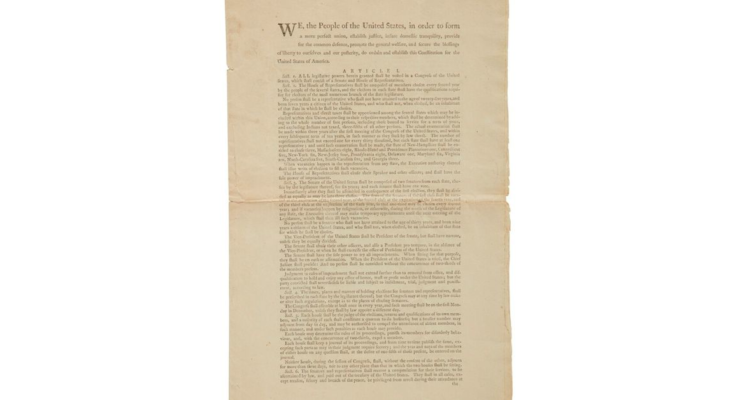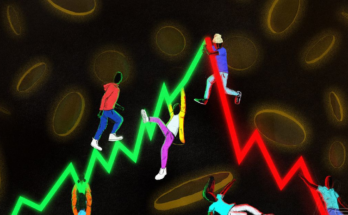As of last Thursday night, ConstitutionDAO found itself in possession of around $49.8 million it wasn’t able to spend. The group’s organizers only had a mandate to spend the crowdfunded money on one thing — a rare copy of the US Constitution that they failed to win at auction — so instead of trying to get community approval to use the money toward some other goal, they instead began the process of returning the funds to backers.
Returning that much money has been a tricky process, though. Backers have to manually request refunds, so even a week later, tens of millions of dollars are still sitting in ConstitutionDAO’s pockets. And because all of the money was collected in Ether, and sending funds over Ethereum incurs high transaction costs, getting money back has become an expensive proposition for contributors.
The return process has not been as messy as its worst moments have let on — at least not yet. More than half of the funds ConstitutionDAO collected have since been returned, according to figures pulled by Andrew Hong, a data scientist working in the crypto space. Close to $27 million, or about 54 percent of the total raised, has been sent back as of this afternoon. But that also means there’s still close to $23 million sitting around waiting to be returned.
ConstitutionDAO said there’s no time limit on contributors getting their money back. Because the returns need to be requested manually, though, the soon-to-be-dissolved organization could theoretically be sitting on a large and otherwise-unusable refund pile for some time to come if backers don’t know or care to get their money out.
The ConstitutionDAO team has discussed creating educational resources on how to get refunds, says Jonah Erlich, a core contributor to ConstitutionDAO who made a guide on how to donate money. “People are new to this; it’s difficult to understand,” he told The Verge. “It’s not the ideal situation.”
The other issue has been transaction fees. All the contributions were made over Ethereum, and Ethereum requires fees — often steep ones — to transmit currency (along with performing many other tasks). That was already a hurdle when it came to raising funds to buy the Constitution. These fees, known as gas, don’t meaningfully shrink when someone is sending a small amount of Ether, so small-dollar donors often had to pay large sums just to send their contribution in the first place, according to Alex Kroeger, an engineer in the crypto space. To send around $170 worth of Ether to the project, he had to spend around $50 in fees.
More than $1 million was spent on gas fees in total to make contributions to ConstitutionDAO, according to numbers pulled by Kroeger and, separately, by Richard Chen, a general partner at the cryptocurrency investment firm 1confirmation. Erlich also estimated the gas fees for contributions were around $800,000 to $1 million. The Ethereum system ConstitutionDAO relied on “is not optimal for small value use cases at the moment,” Kroeger told The Verge.
Anyone who wants their money back now has to pay gas fees again on the refund, and already more than $200,000 has been spent on that in total, according to Kroeger and Chen. The fees may not be an issue for large donors — if you’re getting $100,000 back, $50 is a small sum to pay — but that’s not the case for most of ConstitutionDAO’s contributors. The median contributor sent $217. If that person were to spend $50 to send the money and another $50 to get it back, they’d have lost nearly half of their money.
And that estimate may be conservative. One contributor tweeted that they paid $70 in gas to send $200, then spent another $70 to get the money back. That means they’re out $140 on what should have been a $200 refund. For anyone who sent less than the current gas price, getting a refund simply won’t be worth it.
That’s part of what’s made this situation so complicated. Many contributors had hoped that ConstitutionDAO would pivot its focus and direct its enormous account balance toward another purpose. Organizers briefly floated launching a new token for those interested in reorganizing around a different goal, then reversed course and ultimately announced plans to shut down. It was a disappointment to many in the group’s Discord channel, where contributors were supposed to be able to influence the group’s decision-making. But the organization never actually achieved its goal of becoming a true DAO — a decentralized autonomous organization, which would have been member-controlled — and organizers made the decision themselves to shutter and focus on refunds.
The outcome shows both the promise and challenges of DAOs and other crypto-oriented groups. ConstitutionDAO was able to raise an impressive sum of money very quickly in the span of a week. But steep fees (to say nothing of the challenges of setting up and buying into the Ethereum ecosystem) made the project hard for small donors to contribute to, and the organization’s decision to dissolve showed that, despite all the promises around decentralization, there’s often still a core group in control at the top. And in the end, it’s those who contributed the least who will most get burned.
Additional reporting by Creighton DeSimone



